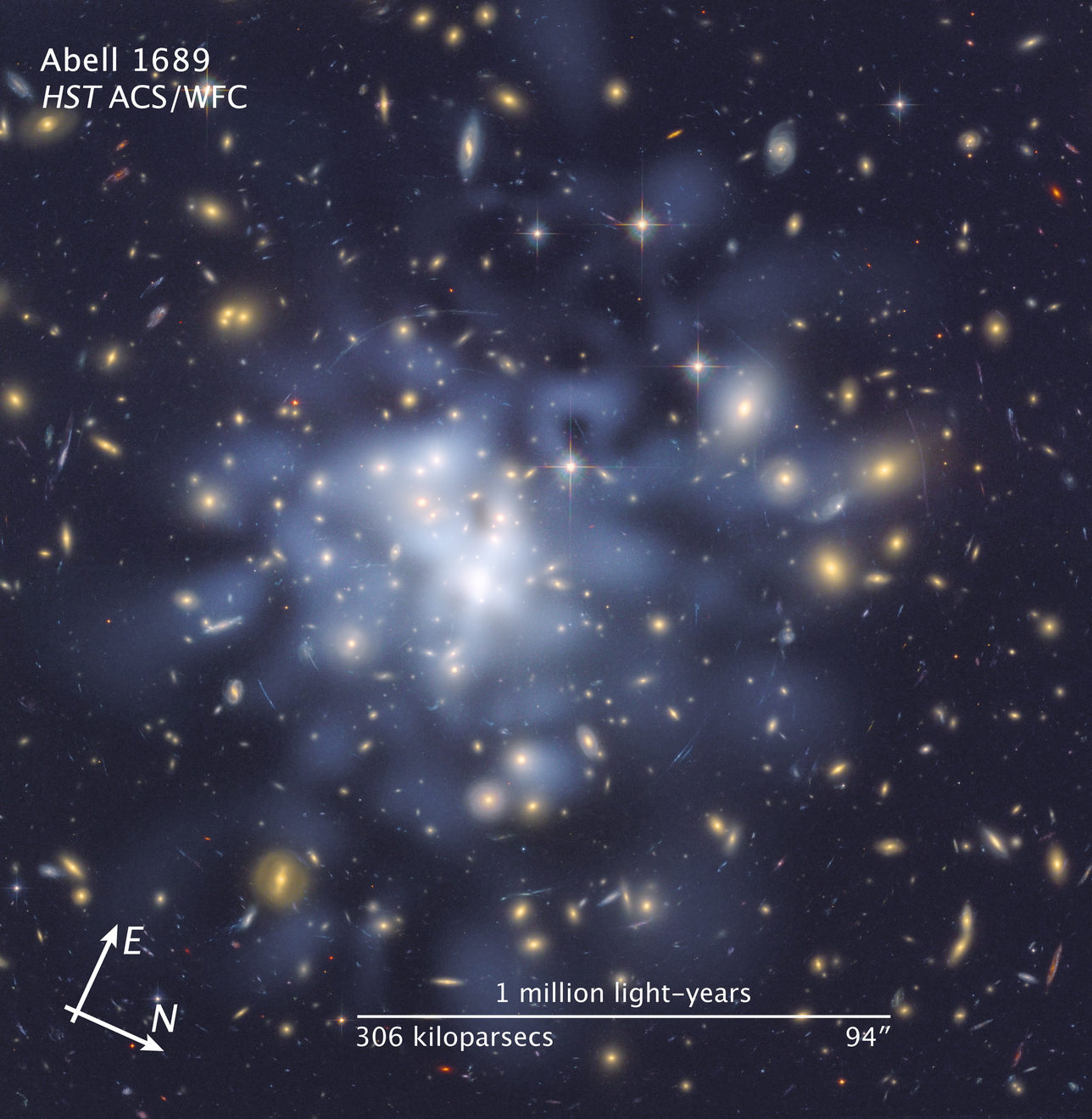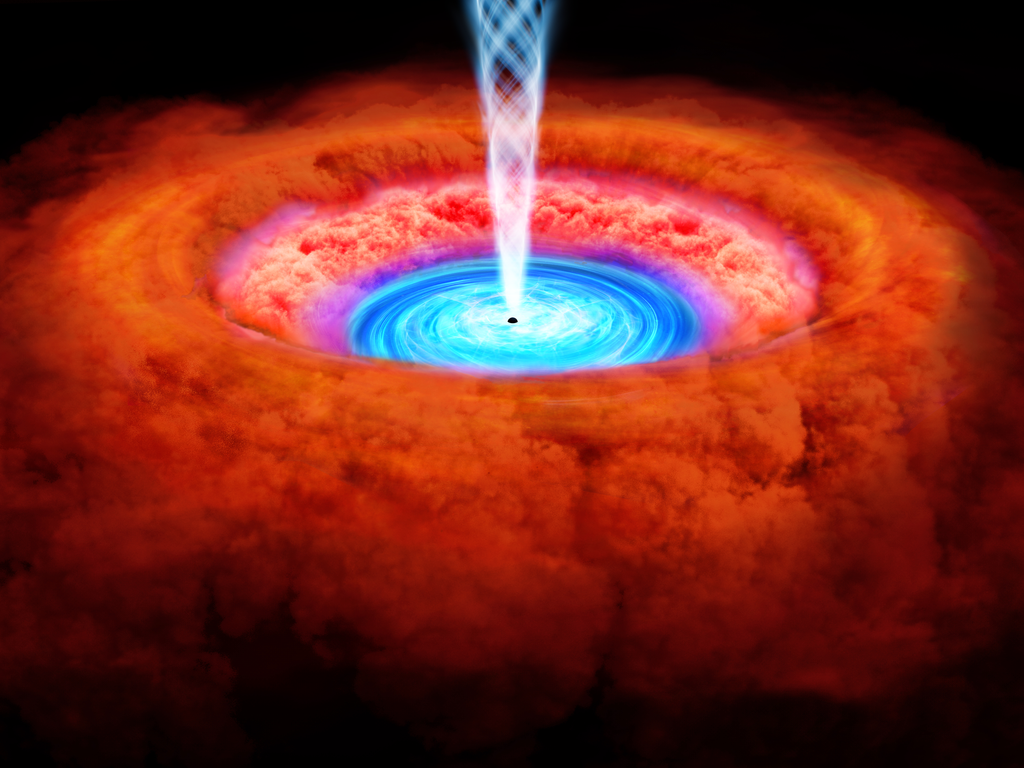1 min read
Compass and Scale Image for Abell 1689 Dark Matter Map

About the Object
- R.A. PositionR.A. PositionRight ascension – analogous to longitude – is one component of an object's position.13h 11m 29.5s
- Dec. PositionDec. PositionDeclination – analogous to latitude – is one component of an object's position.-1° 20' 17.01"
- ConstellationConstellationOne of 88 recognized regions of the celestial sphere in which the object appears.Virgo
- DistanceDistanceThe physical distance from Earth to the astronomical object. Distances within our solar system are usually measured in Astronomical Units (AU). Distances between stars are usually measured in light-years. Interstellar distances can also be measured in parsecs.The distance to the lensing cluster is 2.2 billion light-years (675 megaparsecs). The distances to the lensed galaxies are between 7 and 12 billion light-years.
About the Data
- Data DescriptionData DescriptionProposal: A description of the observations, their scientific justification, and the links to the data available in the science archive.
Science Team: The astronomers who planned the observations and analyzed the data. "PI" refers to the Principal Investigator.ACS/WFC data of Abell 1689 were observed with the HST proposal 9289 : H. Ford and N. Benitez (Johns Hopkins University), and T. Broadhurst (Tel Aviv University).
The science team includes: D. Coe (NASA JPL/Caltech and STScI), N. Benitez (Institute of Astrophysics of Andalusia, Spain), T. Broadhurst (University of the Basque Country, Spain), and H. Ford (Johns Hopkins University).
- InstrumentInstrumentThe science instrument used to produce the data.HST>ACS/WFC
- Exposure DatesExposure DatesThe date(s) that the telescope made its observations and the total exposure time.June 2002, Exposure Time: 13 hours
- FiltersFiltersThe camera filters that were used in the science observations.F475W (g), F625W (r), F775W (i), and F850LP (z)
- Object NameObject NameA name or catalog number that astronomers use to identify an astronomical object.Abell 1689
- Object DescriptionObject DescriptionThe type of astronomical object.Galaxy Cluster
- Release DateNovember 11, 2010
- Science ReleaseDetailed Dark Matter Map Yields Clues to Galaxy Cluster Growth
- CreditIllustration: NASA, ESA, and Z. Levay (STScI); Science: NASA, ESA, D. Coe (NASA, Jet Propulsion Laboratory/California Institute of Technology, and Space Telescope Science Institute), N. Benitez (Institute of Astrophysics of Andulusia, Spain), T. Broadhurst (University of the Basque Country, Spain), and H. Ford (Johns Hopkins University)

This image is a composite of separate exposures acquired by the ACS instrument on the Hubble Space Telescope (HST). Several filters were used to sample broad wavelength ranges. The color results from assigning different hues (colors) to each monochromatic (grayscale) image associated with an individual filter. In this case, the assigned colors are: Cyan: Dark Matter MapBlue: F475W (g)Green: F625W (r)Red: F775W (i) + F850LP (z)

Related Images & Videos

Hubble Helps Astronomers Map Dark Matter in Abell 1689
This NASA Hubble Space Telescope image shows the distribution of dark matter in the center of the giant galaxy cluster Abell 1689, containing about 1,000 galaxies and trillions of stars. Dark matter is an invisible form of matter that accounts for most of the universe's mass....
Share
Details
Claire Andreoli
NASA’s Goddard Space Flight Center
Greenbelt, Maryland
claire.andreoli@nasa.gov


























